The Pink Hydrangea: A Flower Of Beauty And Mystery
The pink hydrangea is a beautiful and versatile flower that can be enjoyed in gardens all over the world. It is known for its large, showy blooms that can range in color from pale pink to deep rose. Pink hydrangeas are also relatively easy to care for, making them a good choice for even novice gardeners.
In addition to their beauty, pink hydrangeas also have a long history of symbolism. In Japan, they are often associated with gratitude and appreciation. In China, they are seen as a symbol of good luck and prosperity. And in Western cultures, pink hydrangeas are often given as a romantic gesture.
Whether you are looking for a beautiful flower to add to your garden or a meaningful gift to give to someone special, the pink hydrangea is a perfect choice.
Main Content
The History of Pink Hydrangeas
The pink hydrangea is native to East Asia, where it has been cultivated for centuries. The first pink hydrangeas were brought to Europe in the 1700s, and they quickly became popular among gardeners. In the 1800s, pink hydrangeas were introduced to North America, where they have also become a popular garden flower.
The Symbolism of Pink Hydrangeas
Pink hydrangeas have a long history of symbolism in different cultures. In Japan, they are often associated with gratitude and appreciation. In China, they are seen as a symbol of good luck and prosperity. And in Western cultures, pink hydrangeas are often given as a romantic gesture.
The Care of Pink Hydrangeas
Pink hydrangeas are relatively easy to care for, but they do require some specific conditions in order to thrive. They prefer full sun or partial shade, and they need well-drained soil. Pink hydrangeas are also heavy feeders, so they should be fertilized regularly.
How to Grow Pink Hydrangeas
Pink hydrangeas can be grown from seed, but it is more common to purchase them as young plants. When planting pink hydrangeas, choose a location that receives full sun or partial shade. The soil should be well-drained and rich in organic matter. Amend the soil with compost or manure before planting.
Space pink hydrangeas about 3 feet apart. Water them regularly, especially during the first year after planting. Fertilize them every spring with a balanced fertilizer.
Pink hydrangeas will bloom in the summer. The color of the blooms will depend on the pH of the soil. In acidic soil, the blooms will be blue. In alkaline soil, the blooms will be pink. You can change the color of the blooms by adjusting the pH of the soil.
Tips for Caring for Pink Hydrangeas
- Water pink hydrangeas regularly, especially during hot, dry weather.
- Fertilize pink hydrangeas every spring with a balanced fertilizer.
- Deadhead spent blooms to encourage new growth.
- Protect pink hydrangeas from frost in cold winter areas.
Conclusion
The pink hydrangea is a beautiful and versatile flower that can be enjoyed in gardens all over the world. It is relatively easy to care for, and it has a long history of symbolism. Whether you are looking for a beautiful flower to add to your garden or a meaningful gift to give to someone special, the pink hydrangea is a perfect choice.
Pink hydrangea flowers are some of the most beautiful and delicate blooms in the garden. Their soft, pastel petals can add a touch of elegance to any outdoor space. If you're looking for a way to add a touch of pink to your garden, hydrangeas are a great option.
There are many different varieties of pink hydrangeas available, so you can find one that's perfect for your climate and growing conditions. Some popular varieties include:
- Endless Summer® Pink: This variety blooms all season long, even in hot, humid climates.
- Limelight®: This variety has large, conical blooms that start out green and fade to pink as they mature.
- Annabelle®: This variety has large, round blooms that are a deep pink color.
No matter which variety you choose, pink hydrangeas are sure to add a touch of beauty to your garden. To learn more about pink hydrangea flowers, visit .
FAQ of pink hydrangea flowers
What makes pink hydrangeas pink?
The color of hydrangea flowers is determined by the acidity of the soil. In acidic soil (pH of 5.5 or less), hydrangeas will produce pink flowers. In alkaline soil (pH of 7 or more), hydrangeas will produce blue flowers. In neutral soil (pH of 6.5), hydrangeas may produce flowers of either color.
You can change the color of your hydrangea flowers by adjusting the pH of your soil. To make your soil more acidic, add sulfur or aluminum sulfate. To make your soil more alkaline, add lime or wood ash.
What are some popular pink hydrangea varieties?
Some popular pink hydrangea varieties include:
- Hydrangea macrophylla, also known as bigleaf hydrangea, is a large shrub that can grow up to 6 feet tall. It produces large, showy flowers that bloom in summer.
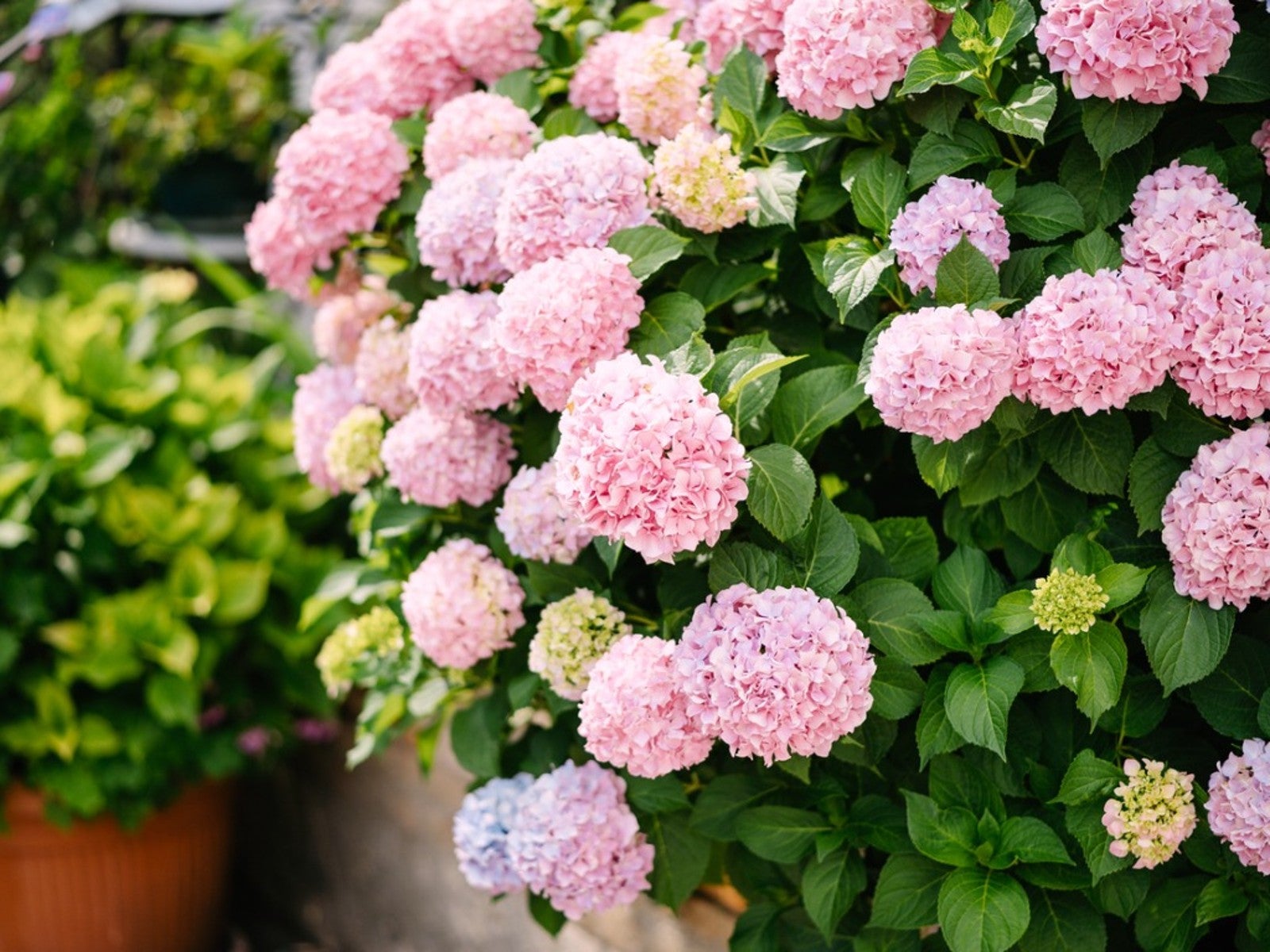
- Hydrangea paniculata, also known as panicle hydrangea, is a smaller shrub that grows up to 4 feet tall. It produces smaller, more delicate flowers that bloom in summer and fall.

- Hydrangea serrata, also known as mountain hydrangea, is a native North American shrub that grows up to 3 feet tall. It produces small, cup-shaped flowers that bloom in summer.
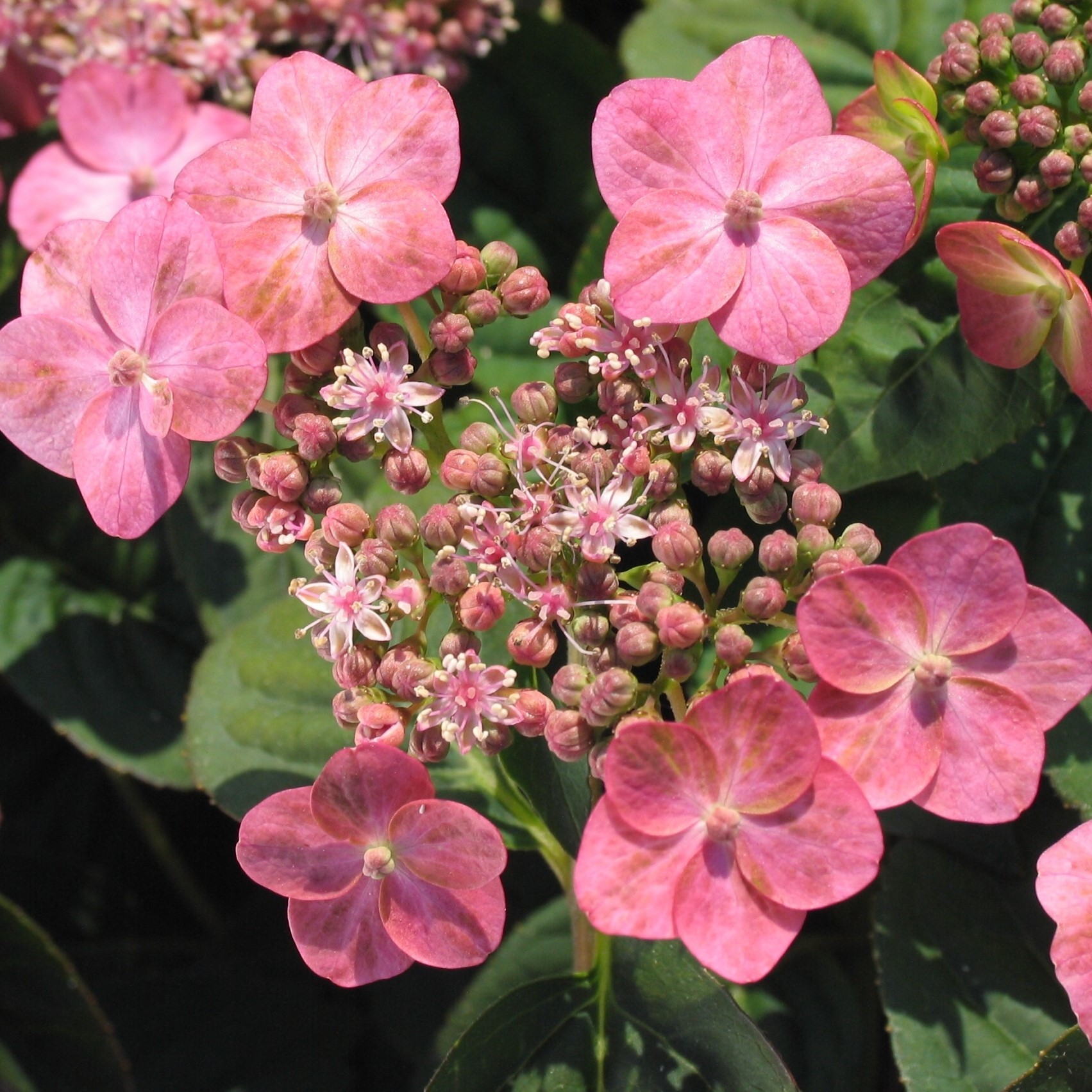
How do I keep my pink hydrangeas pink?
To keep your pink hydrangeas pink, you need to keep the soil acidity at a level of 5.5 to 6.5. You can do this by adding sulfur or aluminum sulfate to the soil every year in the spring. You should also water your hydrangeas regularly, especially during hot, dry weather.
What are some common problems with pink hydrangeas?
Some common problems with pink hydrangeas include:
- Leaf scorch: This is a condition that occurs when hydrangeas are exposed to too much sunlight. The leaves will turn brown and crispy. To prevent leaf scorch, plant your hydrangeas in a location that gets partial shade.

- Powdery mildew: This is a fungal disease that causes white, powdery patches to form on the leaves. To treat powdery mildew, you can use a fungicide or a homemade solution of baking soda and water.

- Aphids: These small, sap-sucking insects can cause the leaves of your hydrangeas to wilt and curl. To control aphids, you can use insecticidal soap or neem oil.

How can I make my pink hydrangeas last longer in a vase?
To make your pink hydrangeas last longer in a vase, you should:
- Cut the stems at an angle.
- Add a flower preservative to the vase water.
- Change the vase water every 2 to 3 days.
- Keep the vase in a cool, dark place.
Image of pink hydrangea flowers
- A large, blooming pink hydrangea flower in a garden.
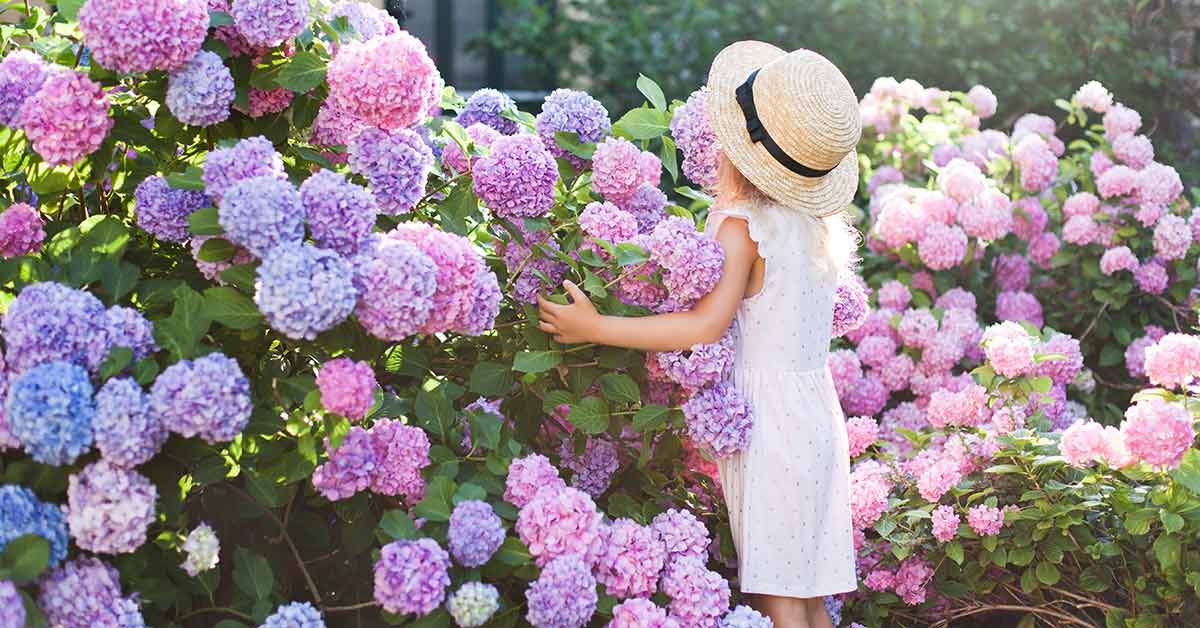
- A bouquet of pink hydrangea flowers in a vase.
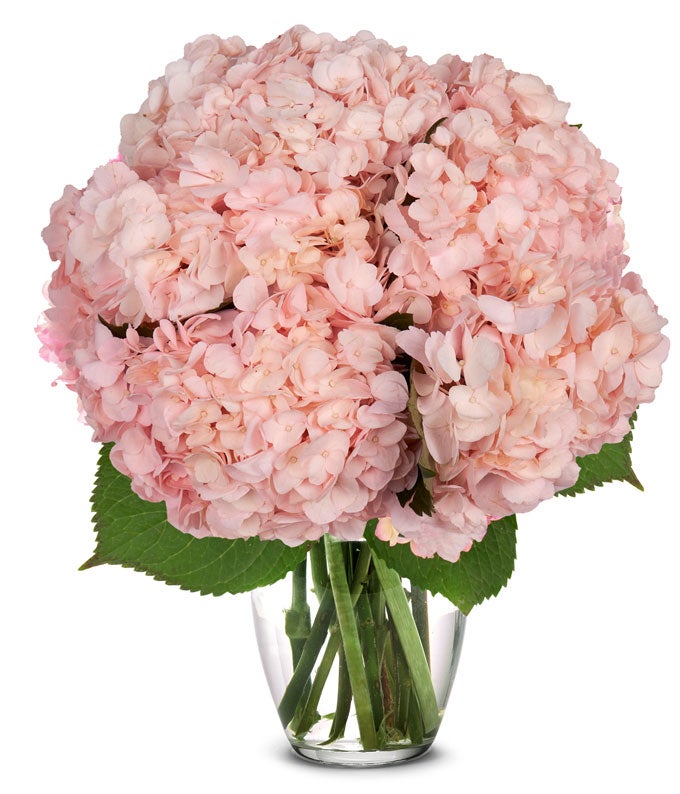
- A close-up of a single pink hydrangea flower, showing the delicate petals and stamens.

- A row of pink hydrangea flowers in bloom, against a backdrop of green foliage.
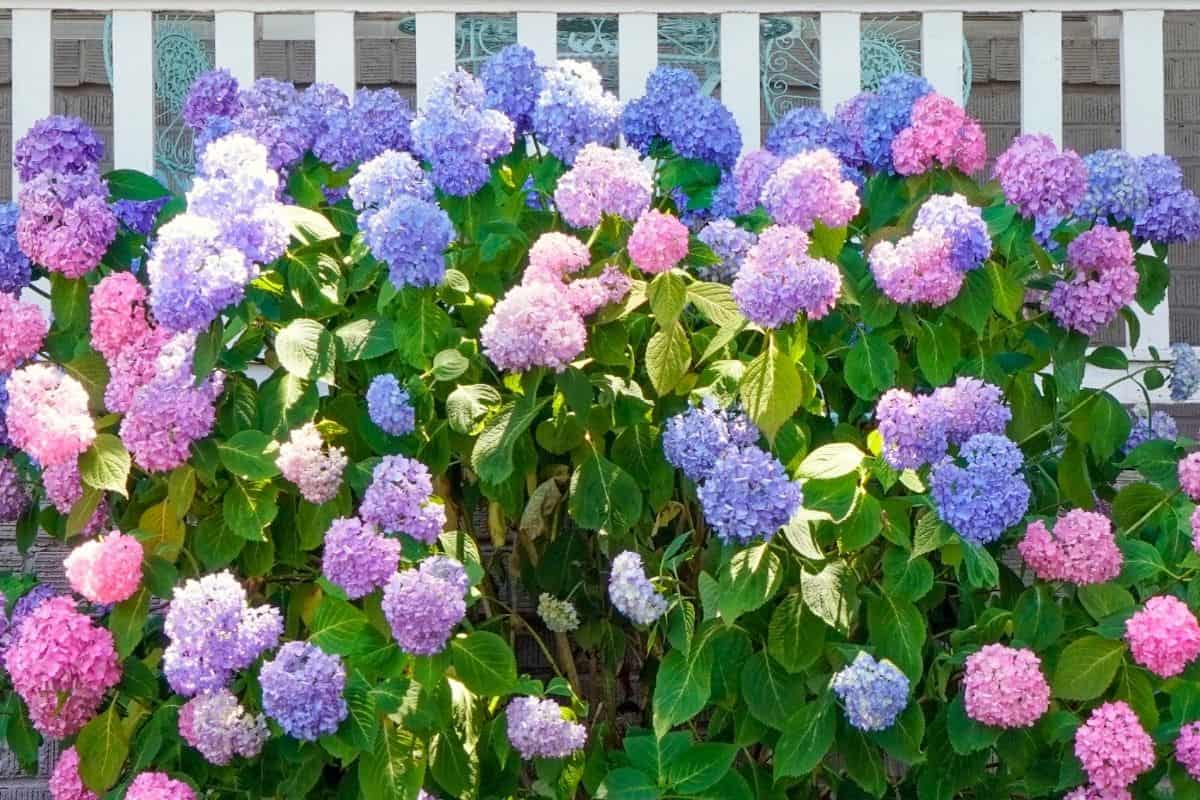
- A pink hydrangea flower in full bloom, with its petals cascading down over a fence.

Post a Comment for "The Pink Hydrangea: A Flower Of Beauty And Mystery"